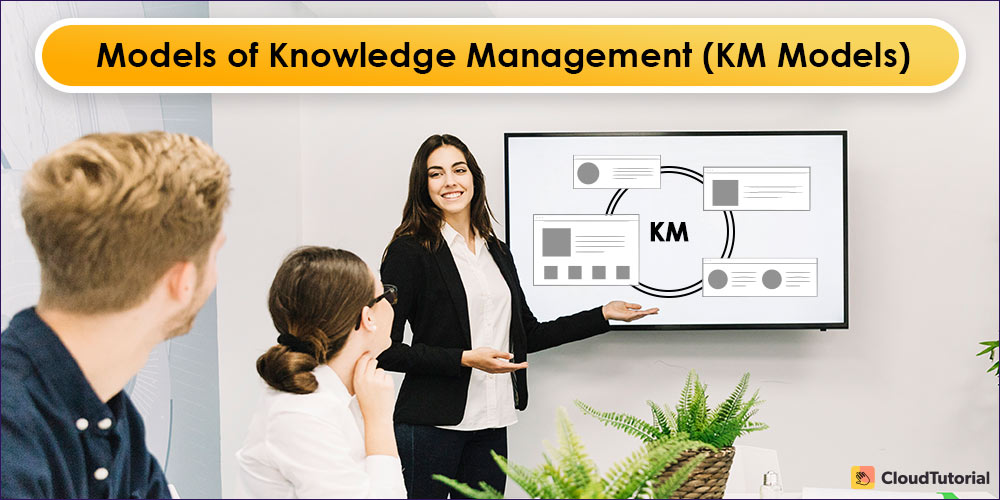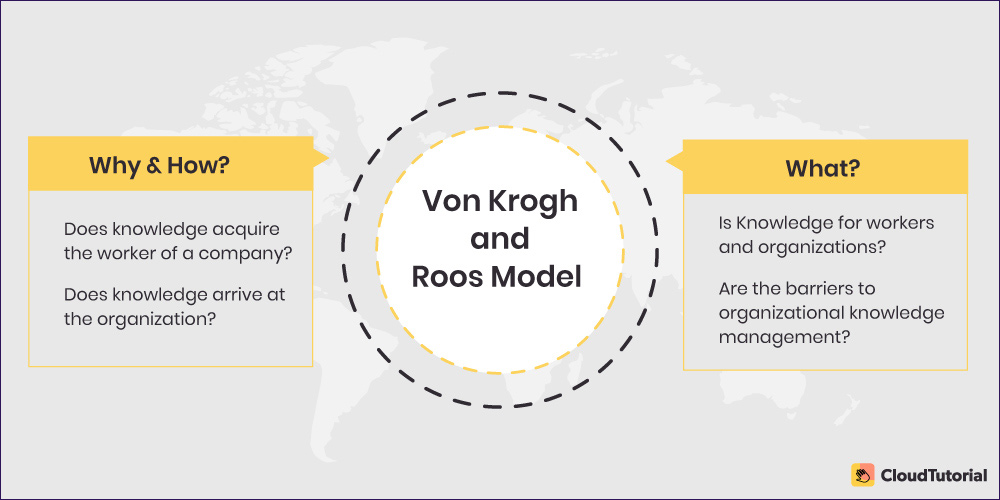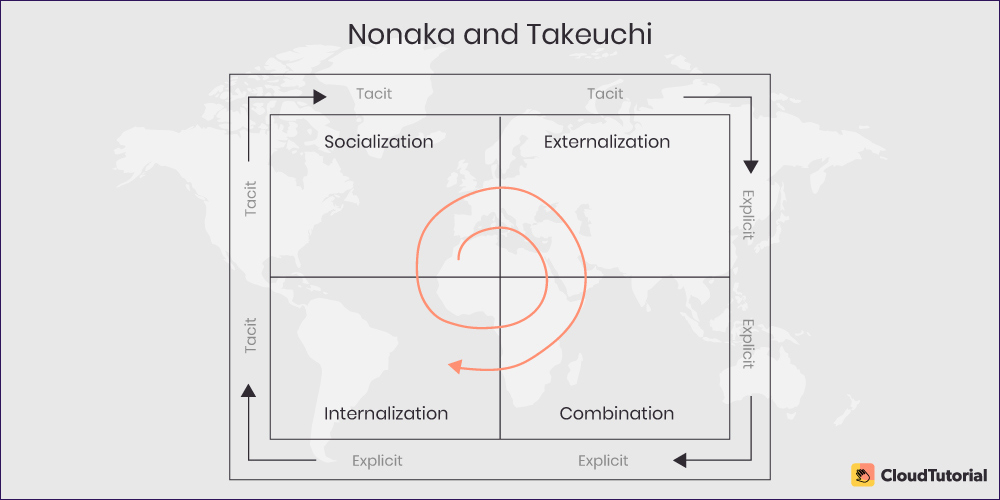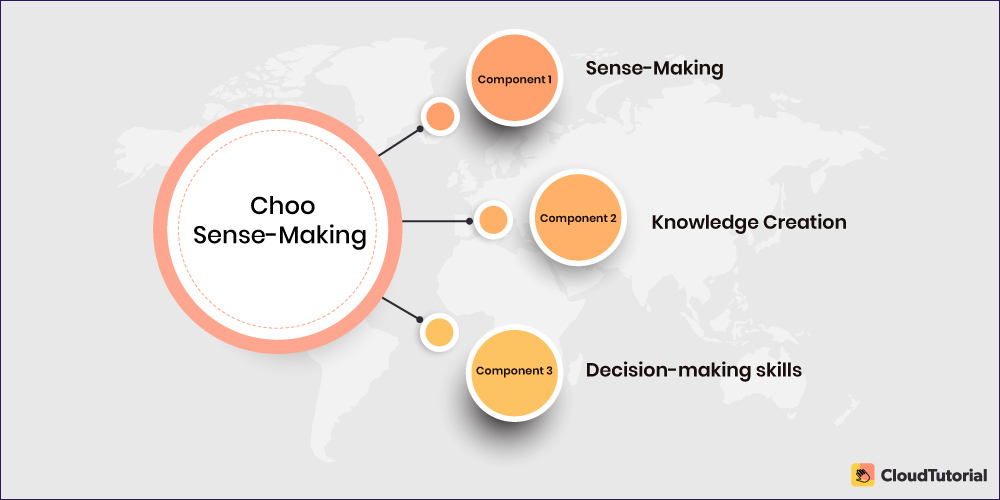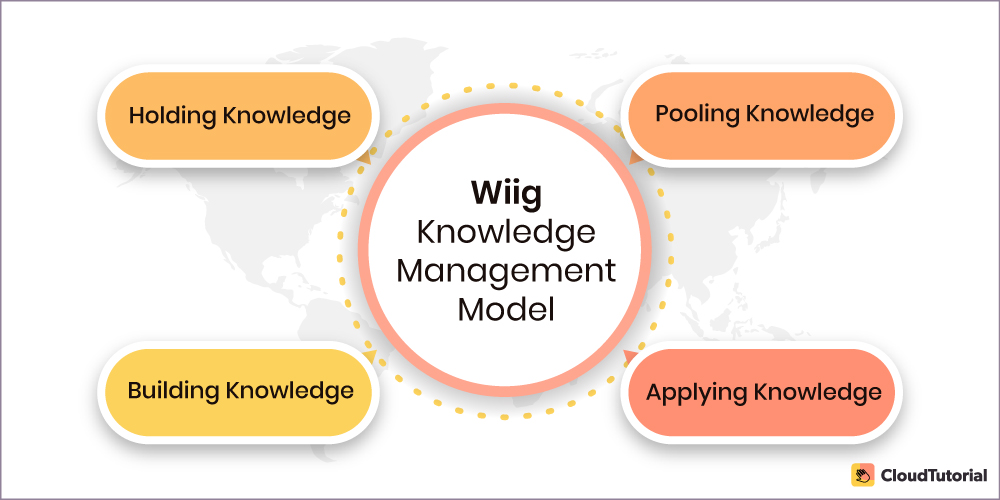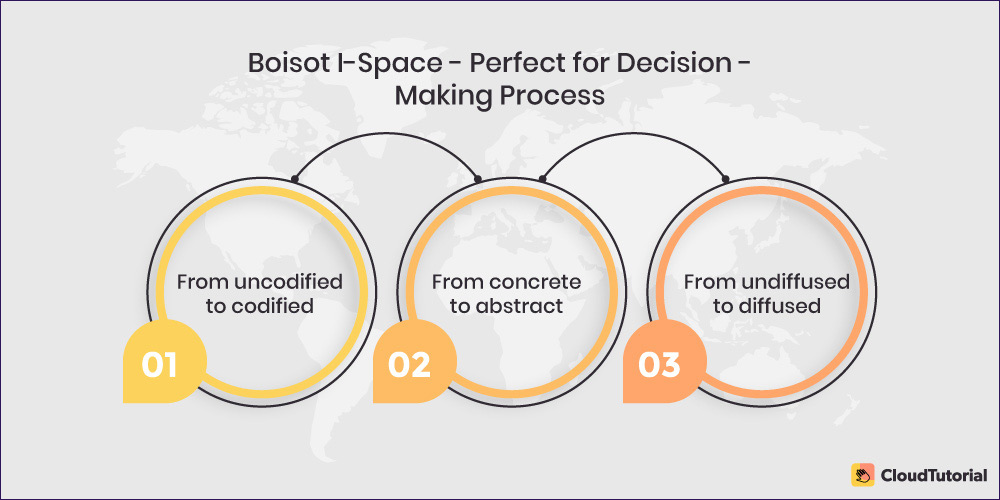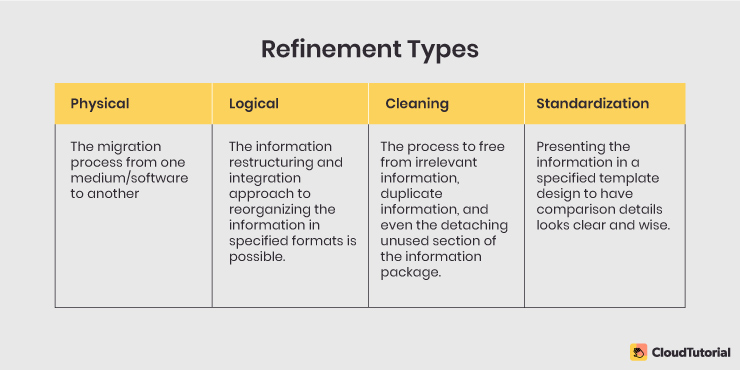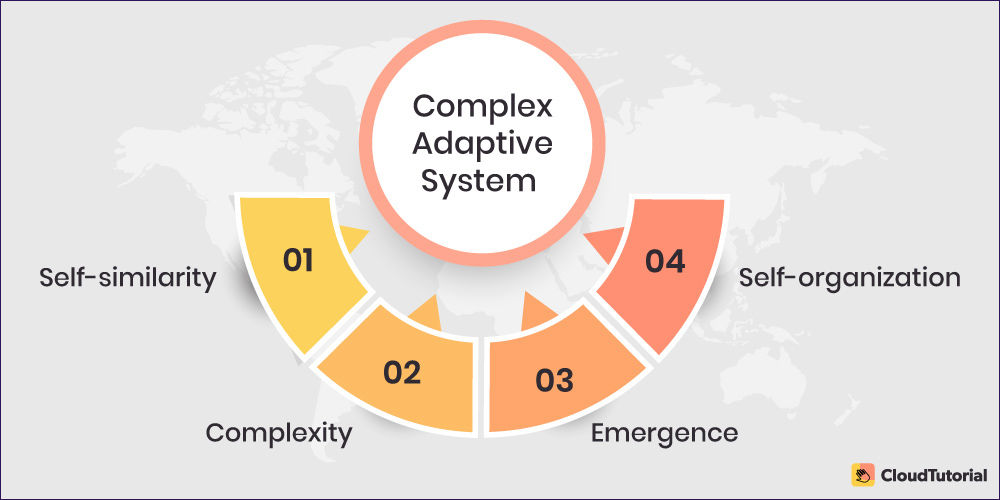Do you know companies that are listed in Fortune 500 lose approximately $31.5 billion every year by not sharing knowledge? Quite a big amount isn’t it?
Knowledge management (KM) is an important aspect of any organization as it helps in sharing knowledge within an organization, leading to improved productivity and better decision-making. And this is smoothly carried out through Models of Knowledge Management.
KM models are frameworks that help organizations effectively manage and utilize their collective knowledge and expertise. Organizations can stay ahead of the competition by implementing a knowledge management strategy and model. So, let’s have a look at the 7 best KM models!
Table of Content
7 Knowledge Management Models
Models of Knowledge Management (KM Models) assist you to put the dissimilar portions of a riddle collectively in a manner that leads to a profound understanding of both the portions and the collaboration that gets made up.
A model-driven KM method permits not only a better explanation of what is currently happening but also they aid in providing a better recommendation for realizing organizational objectives. This section highlights the essential theoretical Knowledge Management models that work extensively in terms of knowledge management literature.
Von Krogh and Roos Model
Designed for Differentiating Between Individual Knowledge and Social Knowledge
Let’s understand the point of view behind building the model of KM models by considering the following diagram.
According to the organizational KM model, von Krogh and Roos came up with an innovative framework solution that the knowledge typically occurs in:
- The mind of the member
- Links between them
It is one of those knowledge management models that examines its essence specifically in terms of:
- Knowledge Workers
- Better Communication Skills
- Enterprise Structure
- Network of Workers
- HR Management
The above five metrics initiate issues that can avert impressive strategies of advantages of knowledge management using cognitive perspectives. Now, what’s this term mean?
It’s a cognitive system, in the form of human or virtual mode, having the responsibility to initiate or create realistic knowledge management models. Once such model representations perform manipulation, the learning process comes into action.
Specification
- On the other hand, the system with organizational knowledge possessing functionalities using self-service is cognitive epistemology.
- Here, a team member is free to select and work with the information in such a way that it comes from external sources in a transparent manner.
- his KM perspective helps the individual’s brain to work like a machine that works for logical purposes.
- In this case, the company’s site needs an impressive framework to fetch information congruence like relational links, specifically from the logical environment actors.
- The brain cannot process the sequential symbols but possess the strong potential to handle the complete perspectives, impressive Knowledge Management models, and effective processes.
- The inter-related network of the different components of KM is possible using the learning rules session to grab such nature of knowledge from the interior and exterior environments.
Sign Up Now!
Get weekly updates from CloudTutorial.
Nonaka and Takeuchi
Best for Knowledge Creation Process
The Nonaka and Takeuchi KM model of knowledge conversion typically invokes four different knowledge conversion modes in the KM.
- Indirect Way Approach – Socialization (tacit to tacit)
- Indirect to Direct Way Approach – Externalization (tacit to explicit)
- Direct Way Approach – Combination (explicit to explicit)
- Direct to Indirect Way – Internalization (explicit to tacit)
Let us now highlight all the four approaches of the Nonaka and Takeuchi model framework in detail.
- Socialization is the model of KM technique through which a team member can quickly share tacit knowledge using monitoring, copying, implementation, and involvement in conventional and non-conventional communities and groups to enhance the traffic.
This process typically develops the prevention of utilizing a physical or virtual space where interaction mainly holds on a social level. - Externalization is an innovative platform to convey tacit knowledge into explicit concepts. This innovative approach of the model of KM plays a vital role in knowledge sharing and the creative process as tacit knowledge typically is highly internalized.
- A combination is a KM model approach through which the company can smoothly integrate the concepts into an effective knowledge system.
Some examples are review report forms, analysis trending, a detailed executive summary, or a new database for content management. - Internalization is a responsive manner to consolidate explicit knowledge into tacit knowledge.
Choo Sense-Making KM model
Ideal for Decision-Making Process
The three major components that the Choo Sense-Making Model of KM shows a considerable focus on:
- Sense-Making
- Knowledge Creation
- Decision-making skills
To flatten the company’s point of view, the above three highly interconnected processes play a vital role. The potential of knowledge creation and its commitment to implement such knowledge creation is of utmost importance for any team member.
Advantages:
The organization’s primary purpose is to adapt and prosper in a dynamic and highly complicated environment. This model of KM’s technique becomes quite possible by implementing various activities to interpret relevant information. Now, the company website can quickly adopt the changes, drifts, and structure of clients, suppliers, and even competitors.
A company can quickly create or acquire, manage and process data or information to develop new knowledge using an innovative way of concept named organizational learning.
Once such a grabbed information context is ready, it helps the companies initiate new abilities, new product creation, services and product development, great user experience, higher traffic, and redesigning organizational processes.The company must have the capability to deal with an option that is more reasonable, informative, and ready to be occupied based on its knowledge management model or strategy.
This model helps the company to invoke all the informational elements in terms of organizational actions.
Do You Want To Create A Robust Knowledge Base?
CloudTutorial facilitates the creation of an effective knowledge base that enables you to accumulate and share important files.
WIIGS KM Model
Designed Explicitly for Knowledge Building Scenario
Karl Wiig, the knowledge management model, depicts that the knowledge management process must be perfect and reasonable to make useful and valuable knowledge.
Dimensions:
Let us now highlight the crucial dimensions in this model of KM.
It is a process through which information-sourcing occurs using tacit or explicit knowledge within the company. On an initial level, the company needs to be aware of complete knowledge and knowledge-sharing capabilities using an efficient way of the KM model’s completeness approach.
On an initial level, the company must be ready with complete knowledge. If no one exists to utilize or access such information or knowledge, then it is of no use for an individual.
It deals with well-structured relations between the number of knowledge objects to create a strong network. As more the knowledge base is connected, the more the content is consistent and of more excellent value.
The essential metrics like facts, procedures, relevant values, cunning, and relative connections must be harmonious and connected. However, the majority of the knowledge content does not meet such perfections.
It is a technique through which the company can know something from a specific opinion point. Such knowledge management typically applies to twofold proportions.
Boisot I-Space
Perfect for Decision-Making Process
The effective knowledge management model by Boisot creates a decision-making ability based on useful information and differentiates it from a physical asset. Such differentiation of new knowledge from data by Boisot typically highlights all the information that is of prime importance to website observers.
Boisot says that they are solely responsible for performing data extraction as a mandate function as per their experience or prior knowledge.
Boisot’s model uses a three-dimensional cube structure:
- From uncodified to codified
- From concrete to abstract
- From undiffused to diffused
Boisot came up with research and initiated Social Learning Cycle (SLC) that acquire the I-Space to create an impressive model using active knowledge workflow using five steps that aids in problem-solving:
The five steps that help in problem-solving:
With data availability of appropriate information, the company can quickly grab the understanding context.
Using a defined structure, the complexity resolves by invoking the structure and consistency to this awareness as codified knowledge comes into action.
The codified understanding that has just initiated generalization to a broader range of practical situations as knowledge becomes more intellectual.
Once the diffusion occurs for the knowledge, there exists a sharing of understanding specific to the target population in a codified and abstract form.
The newly systemized insights apply to several situations that typically invoke new knowledge and learning experiences as the info is absorbed and give rise to learned behavior to become tacit knowledge.
Want To Store And Retrieve Data In A Few Clicks?
CloudTutorial assists you to integrate an organizational knowledge base where you can store and retrieve data.
The primary goal of Boisot’s model of knowledge management is to serve companies with cost-effective solutions. The company’s site simply adopts dynamic knowledge management strategies that directly help the learning cycle’s playful nature.
ZACK Knowledge Management
Best for Converting Information to Usable Knowledge
Meyer and Zack initiated the Model of KM that includes the stages of a KM cycle highlighting the “refinery.”
The ZACK KM Model includes the following steps:
- Acquisition
- Refinement
- Storage and Retrieval
- Distribution and presentation
Every stage of this KM framework follows the basic rationality principle of communicating with each other to facilitate knowledge repository analysis.
ZACK Model of Knowledge Management Steps:
This step primarily focuses on the quality and accuracy of the information.
For instance, suppose you own a biscuit factory and need to buy wheat flour. As a result, you have multiple lists of wheat flour vendors, each possessing different pricing and properties for the same item. A quiet confusion occurs in your mind as you have to compare something and purchase the same thing having the same configuration.
How do you get out of this complicated situation?
To deal with such a situation, the company’s site needs to invoke standardized information to capture it. Data that is comparable and essential for biscuit manufacturing is available in a specified format.
The Acquisition follows the primary principle of “Garbage In Garbage Out.” It means that individuals must take into account proper training to retrieve correct first-time information.
Now, what’s the next step after acquiring information?
It has to be stored, but not all information to be stored. The first thing is that the company needs to convert it into knowledge packets only. It will be relatively easy to use, store and retrieve for future purposes. This conversion process of information to knowledge packets is refined.
Based on the organization’s requirements, there exist multiple refinement types, as shown in the table:
Nowadays, the customized software includes information repositories, but most traditional organizations use files, folders, and other printed information to store information.
But when to use such information?
The answer is during the product creation process. For eg. Information for the recipe and label creation, packaging, and other aspects.
In this KM step, various information recipients are available, and the interactive method through which such information retrieval occurs.
e.g., mails, prints, dossiers, etc. Moreover, the company’s website may use exact timing, excellent frequency, and design in order to retrieve any form or language to receive the best possible result.
A final step of KM where the developed “information” takes the shape of “knowledge.” The recipient’s consideration becomes the primary factor for the presented information, dependending on the organization’s complexities.
Information collection and packaging play a vital role in enhancing company productivity.
The final users usually generated this knowledge’s feedback mechanism in order to enhance the improvement in the knowledge repository.
This, in turn, removes needless information or creates new elements to the process of the information capture.
Complex Adaptive System Models
Based on Advanced Intelligent Techniques
An organization is nothing but seen as an adaptive, complex system – Intelligent Complex Adaptive Systems (ICAS)
A system with several individualistic representatives that perform significant interaction locally is a complex adaptive.
- Specifications:
- The knowledge management models that adopt complex adaptive structures include function strings.
- The primary reason behind it is to bring insurance among the living system feasibility in general and of organizations, to a great extent.
- ICAS systems typically follow cybernetics principles. Is it connected to Cyber based information? No. It uses communications and control mechanisms to understand the process a viable company’s site should perform.
- IThe adaptive systems possess various independent representatives that interact with each other to enhance business performance.
- IThe model usually includes composite behavior, where the self-organized people in organizations are intelligent elements. In addition to it, such aspects are a fundamental part of the organization’s hierarchies.
- Specifications:
These are the leading and top-most knowledge management models that help you, and your company website deal with the knowledge or information management approaches on a large scale.
A knowledge management framework (KM model)is an organized technique to look at the procedure of KM utilized by an organization to inspect its possessions and alter them to its particular needs.
- Leadership
- Business Value
- Technology
- Learning
Knowledge management tools are the systems that companies employ for sharing information externally and internally. A few examples of knowledge management tools comprise learning management systems, knowledge bases, and customer relationship systems.
A primary purpose of knowledge management systems is to interpret, structure, store, and finally share the company or individual’s information assets within the company. Some of the best examples of KM systems are:
- Feedback Database
- Shared Project Files
Understanding KM Models can help organizations choose the right approach for managing their knowledge and ensuring its effective use from various sources of knowledge. Organizations can improve their knowledge management practices and achieve better business results by selecting the right model.
The four components of the Knowledge Management Model are typically people, process, technology, and culture. These components represent the key areas organizations must focus on to manage their quality knowledge effectively.
The types of knowledge as per the WIIG KM model are:
- Explicit knowledge
- Tacit knowledge
- Embodied knowledge
Models of Knowledge Management (KM Models) are critical to the effective management of knowledge within an organization. Each model has its strengths and weaknesses. So organizations must select the model that best meets their specific needs to facilitate the internal knowledge base for continuous learning.
Whatever model is used, KM assists organizations in making better use of their knowledge assets, improving collaboration, and driving innovation. Contact CloudTutorial to seize all the diverse processes within your company for knowledge enhancement.
Try it out before you decide.
Create a test article NOW!
Using this tool, all you have to do is add your first test article and see how it looks. Now, you don’t have to sign-up or login into CloudTutorial software just to check how your first article appears.
